- Joined
- Feb 2, 2011
- Messages
- 2,324
NEW RELEASES FOR NOVEMBER 2025
THE SECOND WORLD WAR
GERMAN ARMOUR
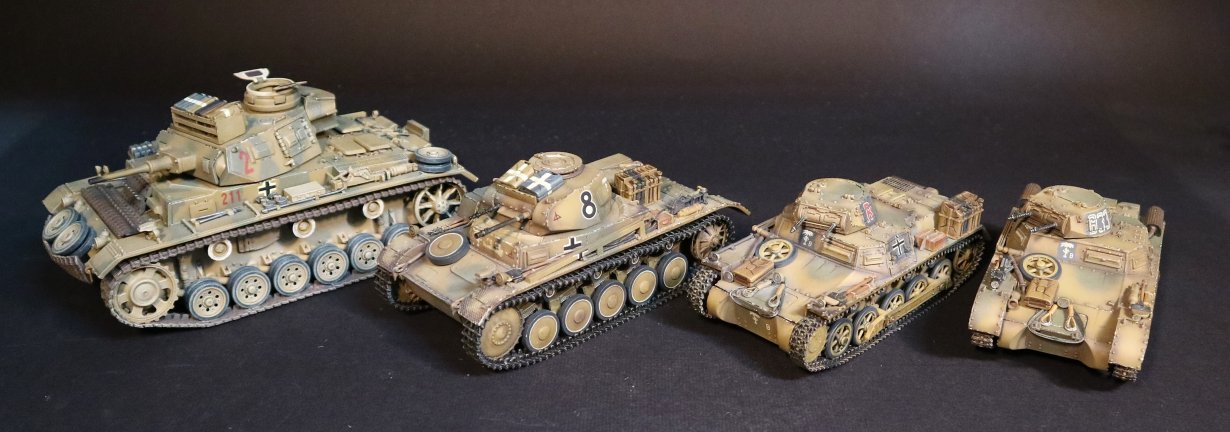
In the windswept expanse of the Libyan desert, the arrival of the 15. Panzer-Division (15. Pz.Div.) in the spring of 1941 marked a critical shift in the Axis campaign in North Africa. Created in late 1940 from the experienced 33. Infanterie-Division (Motorized) and bolstered by Panzer-Regiment 8 (Pz.Rgt. 8)—a battle-tested unit from the 10. Panzer-Division—the division quickly became a key armored component of Generalleutnant Erwin Rommel’s Deutsches Afrikakorps (DAK).
Among the vehicles that rolled off the ships and into the searing desert heat was a small but important element of the division’s armored strength: the Panzer II Ausf. C, including vehicle #8 of the 8. Kompanie, Pz.Rgt. 8. Though technically obsolete by the standards of 1941, the Panzer II continued to serve in the leichte Züge (light platoons) of Panzer regiments.
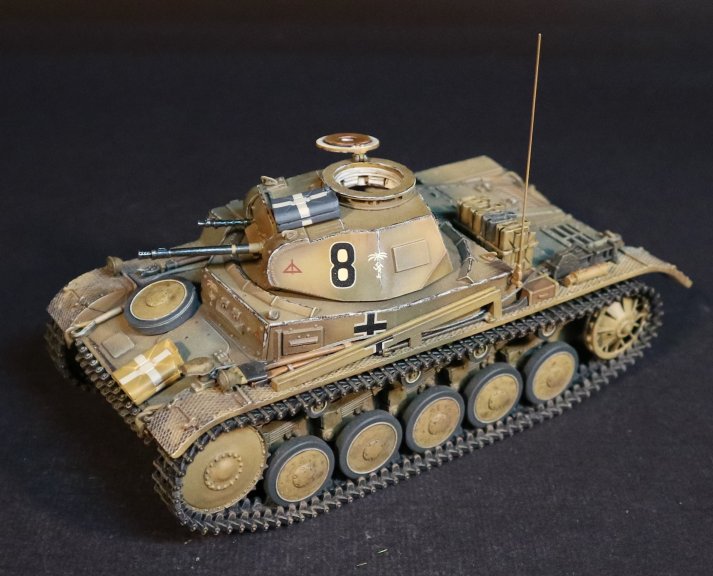
GA-25D
THE SECOND WORLD WAR,
GERMAN ARMOUR,
Panzer II Ausf. C #8
Panzer-Regiment 8, 15. Panzer-Division, Deutsches Afrikakorps
North Africa, May 1941
The Panzer II Ausf. C was the definitive version of the early Panzer II series and one of the most widely produced light tanks in the German arsenal prior to 1941. It featured improved leaf spring suspension over earlier models, a fully traversable turret, and a compact yet rugged design built around the rapid-fire 2 cm KwK 30 L/55 autocannon, paired with a coaxial 7.92 mm MG34.
By the time of the desert campaign, its original 14.5 mm front armor had been upgraded by the addition of extra armor plates bolted onto the front hull and turret, providing the equivalent of 30–35 mm of frontal protection. While still modest, this offered some survivability in battle. It also received a new cupola for improved battlefield visibility when the crew was "buttoned up" in combat. The tank’s agility, low silhouette, and mechanical reliability made it a valuable asset in the fluid, fast-paced warfare of the North African desert, where it served not only in reconnaissance roles but also in flank protection, infantry support, and artillery observation duties.
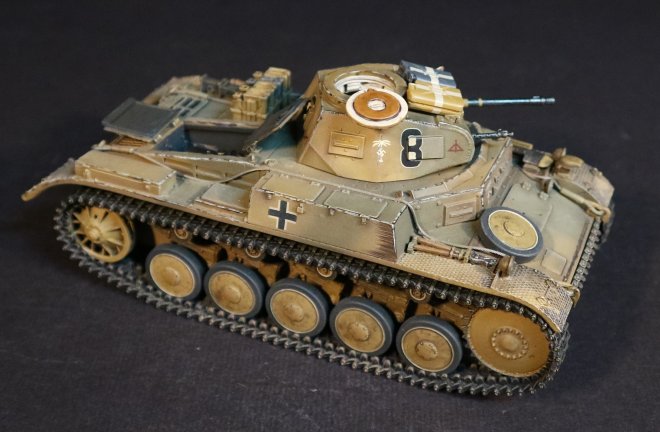
Although no longer doctrinally employed for tank-versus-tank combat, armor-piercing ammunition fired from the Panzer II’s 2 cm KwK 30 was still capable of penetrating the armor of the British Light Tank Mk. VI and Cruiser Tank Mk. I at ranges up to 500 meters. It could also defeat the side armor of the Cruiser Tank Mk. IVa at 300 meters and its front hull at 100 meters. However, the more heavily armored British Infantry Tanks, like the Matilda II, were impervious to the Panzer II’s main gun at any range. The Germans were well aware of these limitations, and the Panzer II was employed against enemy tanks when favorable tactical conditions presented themselves.
Before deployment to North Africa, Panzer II tanks underwent Tropen (tropical) modifications at the depot level. These included cutouts in the engine deck and larger high-speed radiator fans to enhance cooling, improved air filtration systems to handle desert dust, and additional field gear suited to desert operations.
15. Panzer-Division’s Panzer IIs were also painted in the first standard German tropical camouflage scheme, consisting of a RAL8000 Gelbbraun basecoat with RAL7008 Graugrün painted in a disruptive pattern. This low-contrast two-tone camouflage blended seamlessly with the sandy terrain of Cyrenaica and Tripolitania.
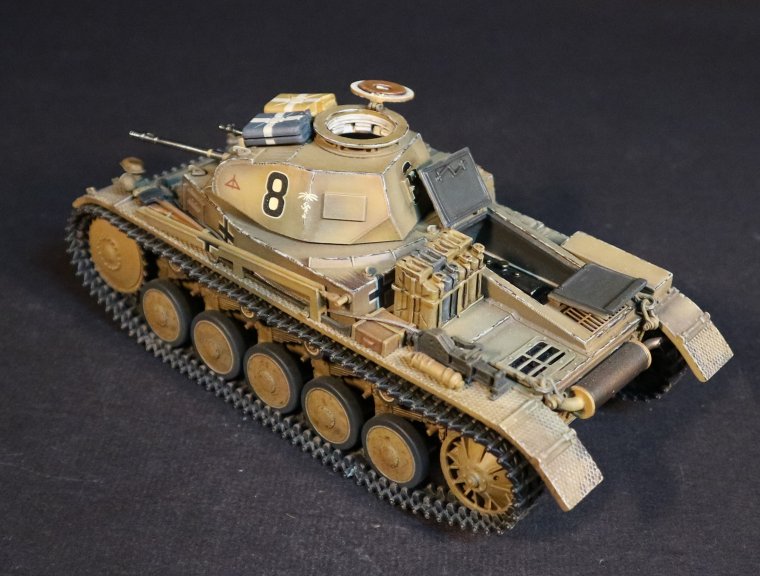
John Jenkins Designs is pleased to release its first Panzer II. The tanks of the 8. Kompanie of Pz.Rgt. 8 carried only a single #8 on the turret, representing the tank company, without displaying individual vehicle numbers. This turret marking was distinctive in that the center of the black “8” was filled with solid white and bordered with a white outline—an unusual style clearly visible in wartime photographs.
Panzer II #8 also features the red Wolfsangel rune insignia of Panzer-Regiment 8, the red triangle bisected by a horizontal line (the divisional symbol of 15. Panzer-Division) and a white palm tree with swastika representing the Deutsches Afrikakorps.
Although lightly armed and armored, the Panzer II Ausf. C proved its worth in key actions during Rommel’s desert offensives, including the Battle of Halfaya Pass, the sieges and capture of Tobruk, and countless probing reconnaissance thrusts that exploited gaps and maintained pressure on retreating British forces. In these mobile operations, speed, flexibility, and communication were often more important than raw firepower...qualities that the Panzer II delivered in spades.
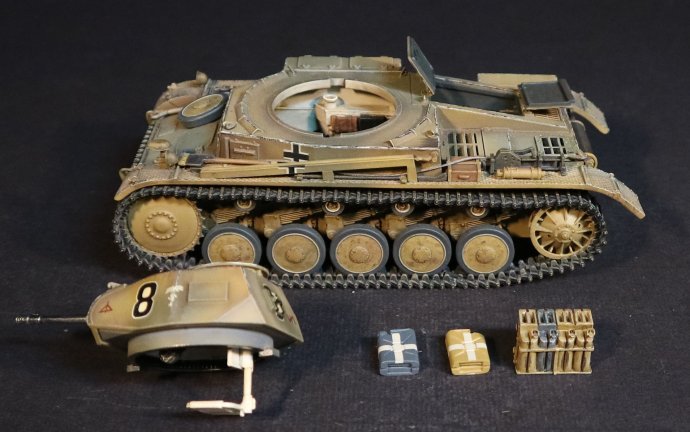
JJ Designs proudly presents Panzer II Ausf. C #8, a meticulously researched and beautifully finished 1/30 scale model, capturing both the technical evolution and operational significance of the Panzer II during the crucial campaigns of 1941.
The JJD Panzer II includes the following features:
Many Thanks to Steve “Hunter Rose”.
**PLEASE CONTACT YOUR LOCAL DEALER TO PLACE YOUR PRE-ORDERS**
THE SECOND WORLD WAR
GERMAN ARMOUR

In the windswept expanse of the Libyan desert, the arrival of the 15. Panzer-Division (15. Pz.Div.) in the spring of 1941 marked a critical shift in the Axis campaign in North Africa. Created in late 1940 from the experienced 33. Infanterie-Division (Motorized) and bolstered by Panzer-Regiment 8 (Pz.Rgt. 8)—a battle-tested unit from the 10. Panzer-Division—the division quickly became a key armored component of Generalleutnant Erwin Rommel’s Deutsches Afrikakorps (DAK).
Among the vehicles that rolled off the ships and into the searing desert heat was a small but important element of the division’s armored strength: the Panzer II Ausf. C, including vehicle #8 of the 8. Kompanie, Pz.Rgt. 8. Though technically obsolete by the standards of 1941, the Panzer II continued to serve in the leichte Züge (light platoons) of Panzer regiments.

GA-25D
THE SECOND WORLD WAR,
GERMAN ARMOUR,
Panzer II Ausf. C #8
Panzer-Regiment 8, 15. Panzer-Division, Deutsches Afrikakorps
North Africa, May 1941
The Panzer II Ausf. C was the definitive version of the early Panzer II series and one of the most widely produced light tanks in the German arsenal prior to 1941. It featured improved leaf spring suspension over earlier models, a fully traversable turret, and a compact yet rugged design built around the rapid-fire 2 cm KwK 30 L/55 autocannon, paired with a coaxial 7.92 mm MG34.
By the time of the desert campaign, its original 14.5 mm front armor had been upgraded by the addition of extra armor plates bolted onto the front hull and turret, providing the equivalent of 30–35 mm of frontal protection. While still modest, this offered some survivability in battle. It also received a new cupola for improved battlefield visibility when the crew was "buttoned up" in combat. The tank’s agility, low silhouette, and mechanical reliability made it a valuable asset in the fluid, fast-paced warfare of the North African desert, where it served not only in reconnaissance roles but also in flank protection, infantry support, and artillery observation duties.

Although no longer doctrinally employed for tank-versus-tank combat, armor-piercing ammunition fired from the Panzer II’s 2 cm KwK 30 was still capable of penetrating the armor of the British Light Tank Mk. VI and Cruiser Tank Mk. I at ranges up to 500 meters. It could also defeat the side armor of the Cruiser Tank Mk. IVa at 300 meters and its front hull at 100 meters. However, the more heavily armored British Infantry Tanks, like the Matilda II, were impervious to the Panzer II’s main gun at any range. The Germans were well aware of these limitations, and the Panzer II was employed against enemy tanks when favorable tactical conditions presented themselves.
Before deployment to North Africa, Panzer II tanks underwent Tropen (tropical) modifications at the depot level. These included cutouts in the engine deck and larger high-speed radiator fans to enhance cooling, improved air filtration systems to handle desert dust, and additional field gear suited to desert operations.
15. Panzer-Division’s Panzer IIs were also painted in the first standard German tropical camouflage scheme, consisting of a RAL8000 Gelbbraun basecoat with RAL7008 Graugrün painted in a disruptive pattern. This low-contrast two-tone camouflage blended seamlessly with the sandy terrain of Cyrenaica and Tripolitania.

John Jenkins Designs is pleased to release its first Panzer II. The tanks of the 8. Kompanie of Pz.Rgt. 8 carried only a single #8 on the turret, representing the tank company, without displaying individual vehicle numbers. This turret marking was distinctive in that the center of the black “8” was filled with solid white and bordered with a white outline—an unusual style clearly visible in wartime photographs.
Panzer II #8 also features the red Wolfsangel rune insignia of Panzer-Regiment 8, the red triangle bisected by a horizontal line (the divisional symbol of 15. Panzer-Division) and a white palm tree with swastika representing the Deutsches Afrikakorps.
Although lightly armed and armored, the Panzer II Ausf. C proved its worth in key actions during Rommel’s desert offensives, including the Battle of Halfaya Pass, the sieges and capture of Tobruk, and countless probing reconnaissance thrusts that exploited gaps and maintained pressure on retreating British forces. In these mobile operations, speed, flexibility, and communication were often more important than raw firepower...qualities that the Panzer II delivered in spades.

JJ Designs proudly presents Panzer II Ausf. C #8, a meticulously researched and beautifully finished 1/30 scale model, capturing both the technical evolution and operational significance of the Panzer II during the crucial campaigns of 1941.
The JJD Panzer II includes the following features:
- Rotating turret with opening hatches
- Accurate early-war desert camouflage and unit-specific insignia
- Fully detailed interior with crew compartments
- Opening engine compartment with interior detail
Many Thanks to Steve “Hunter Rose”.
**PLEASE CONTACT YOUR LOCAL DEALER TO PLACE YOUR PRE-ORDERS**

